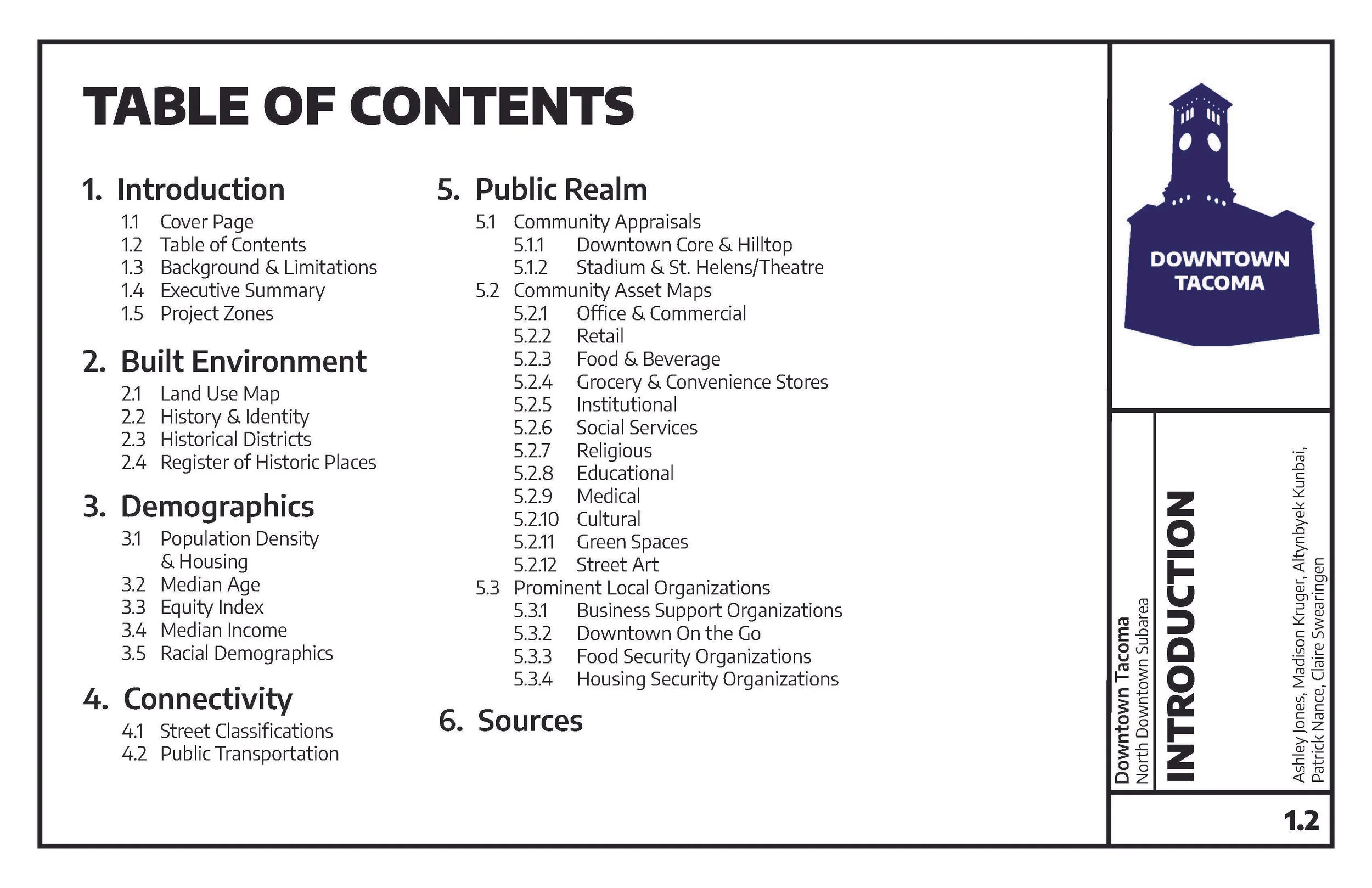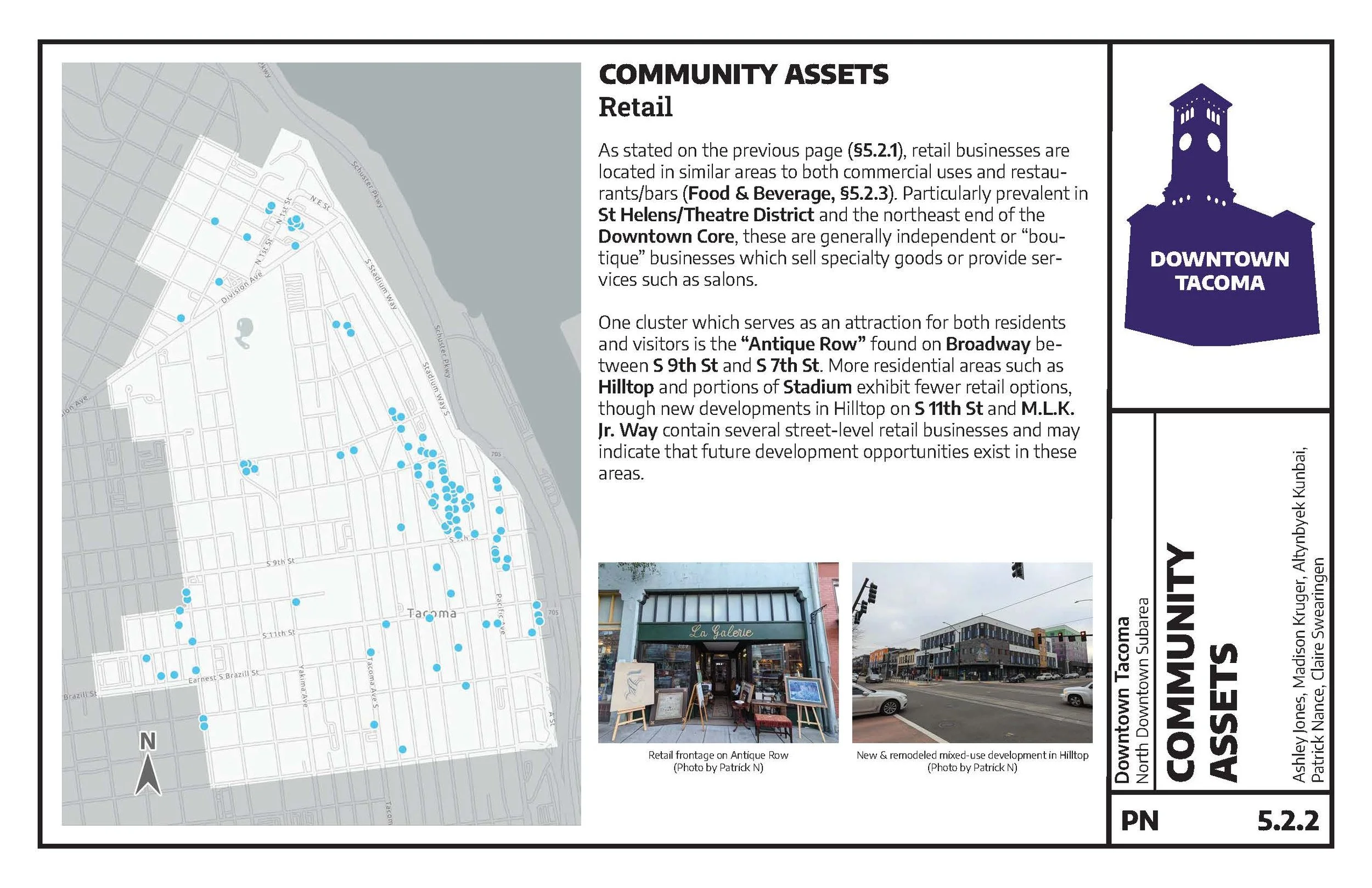University of Washington Tacoma
Community Development: Urban Spatial Design
Course Info:
Part 1 of a 3 Part Final Studio Series for the Community Development Master Program at UW Tacoma. Students participate in a local site study within the Tacoma area.
Building Community Through Collaborative Design
True design doesn't happen in isolation—it emerges from authentic community engagement, mutual aid principles, and the recognition that those who inhabit spaces are the experts of their own experiences.
This course challenged the traditional top-down approach to urban planning by centering community voices and fostering genuine collaboration throughout the design process.
Drawing from frameworks rooted in social justice and queer theory, we explore how spatial design can become a tool for liberation, belonging, and collective care rather than displacement or exclusion.
What we learned:
Community as Co-Creator: Students learned that meaningful design requires deep listening and authentic partnership with communities. We examined how power dynamics shape planning processes and practice methods for redistributing decision-making authority.
Spatial Justice in Action: Through a hands-on project, we investigate how built environments can either reinforce systems of oppression or create conditions for thriving. Students developed skills to recognize and challenge spatial inequities while designing for accessibility, inclusion, and collective flourishing.
Collaborative Design Process: Moving beyond extractive "community input" sessions, students facilitated genuine co-creation experiences. We practiced conflict transformation, consensus building, and holding space for multiple visions while working toward shared goals.
Visual Communication as Care: Students developed technical skills in spatial representation—not as neutral tools, but as powerful methods for storytelling, advocacy, and community organizing. We explored how different visual approaches can either center or marginalize community voices.
“You have to act as if it were possible to radically transform the world. And you have to do it all the time.”
This course was our practice ground for that radical transformation, one collaborative design process at a time.
Project Results:








































The truth about teaching is:
my students have been my greatest teachers.
In every classroom, workshop, and collaborative project, I've witnessed the transformative power of bringing together diverse perspectives, lived experiences, and ways of knowing. My students have challenged my assumptions, expanded my understanding of community care, and shown me new possibilities for what justice-centered design can look like in practice.
They've taught me that authentic learning happens not when knowledge flows from teacher to student, but when we create conditions for mutual exchange—where everyone's wisdom matters, where questions are as valuable as answers, and where vulnerability becomes a source of collective strength.
From undergraduate students reimagining their hometown spaces to graduate researchers developing frameworks I'd never considered, each person who has sat in my classrooms has left me changed. They've shown me that the future of design and planning rests in the hands of people who refuse to accept "that's just how things are" as an answer.
These students go on to work in nonprofits, design firms, community organizations, government agencies, and start their own ventures—all while carrying forward a commitment to equity, accessibility, and community-centered practice. They are the planners, designers, organizers, and systems thinkers our world desperately needs.
If you're looking to hire passionate, skilled, and justice-oriented emerging professionals, I'd be honored to connect you with some of these incredible humans.
Reach out to me at joribercier@gmail.com for introductions—because investing in their futures is investing in all our collective liberation.
